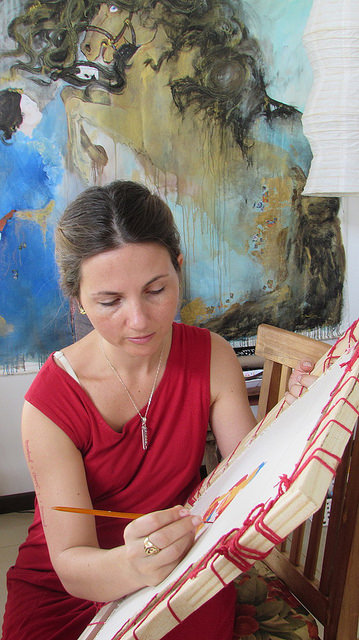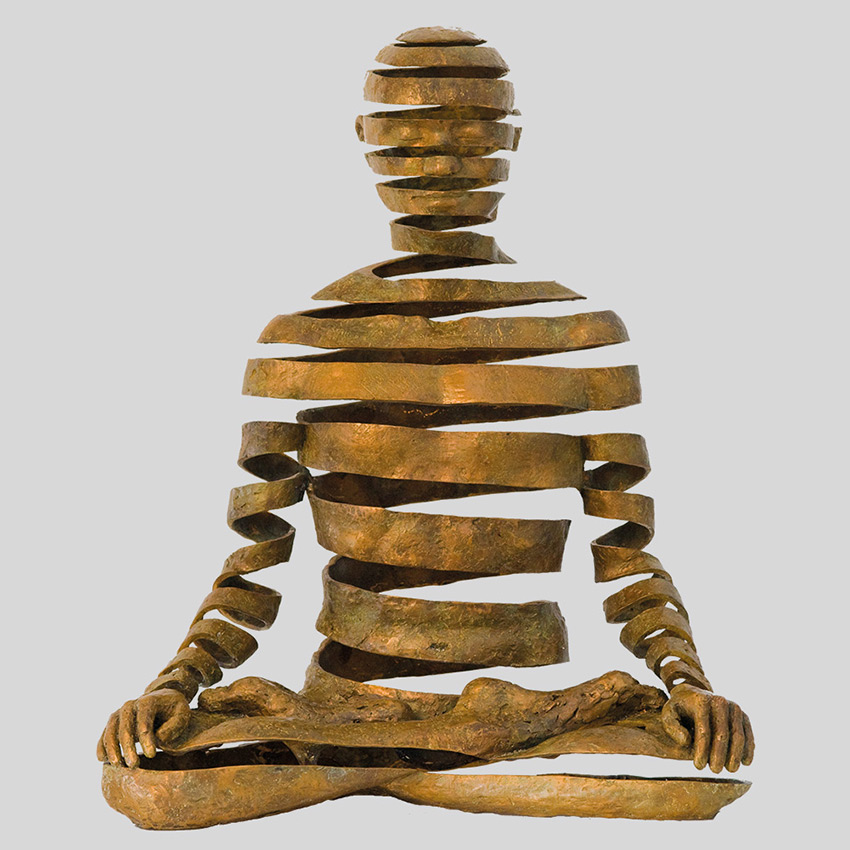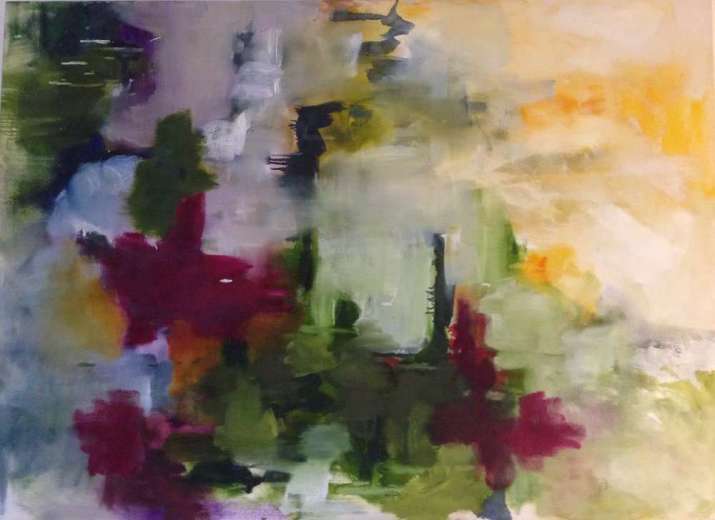There is a fascinating group of people shaping contemporary artistic culture in the Buddhist world. Some of them are regular contributors to this website, including Sarah Beasley, Tilly Campbell-Allen, or Tiffani Gyatso, whilst others have been interviewed about their craft (sometimes by our aforementioned artist writers). These individuals include contemporary creators like painter Andrea Traber, calligrapher Alok Hsu Kwang-Han, Taiwan-born Lee Ming-wei, and sculptor Sukhi Barber, as well as artists who more overtly blend traditional items like thangkas or brocades and other tactile crafts for contemporary needs, like Leslie Rinchen-Wongmo (who specializes in Tibetan applique) and Helene Rein (similarly, a stitcher of Tibetan textiles).

The artists that have lent their precious voices to Buddhistdoor Global come from different backgrounds and follow different teachers and schools, but they are often either lay Buddhists or influenced by Asian and Buddhist spirituality, and use their spiritual knowledge to give shape and form to their work and message.
One only need to get to be acquainted with some of the things they do to see how relatable they are in their approach to Buddhism’s role in secular art. Non-Buddhist buyers can understand the artworks because they truly are made in the service of art rather than religious ritual or paraphernalia. After all, many of these artists were either born in the West, have been trained in Western artistic institutions, or have worked in the USA or Europe. From sculpture to paintings to installations, these professional creators have already begun making their mark on the art world. It’s a limited mark by mere virtue of their small numbers, but there are enough to allow Buddhistdoor Global to cover their activities regularly and even invite frequent contributors from these circles. So they are here, and their offerings are rich and vibrant. I really think that encountering their works and journeys or even just reading about them has opened my eyes to new ways of understanding the creative energies of Buddhism.

Yet I’m not sure how to articulate or express their role in the wider context of art in general, “art in the Buddhist world,” or simply “Buddhism as an inspiration for art.” This is what fascinates me. For example, does the usual Western dichotomy between “religious” and “secular” art even work if we take into account another gathering wave of incredible Buddhist-inspired creativity coming from China, Japan, Korea, and elsewhere in Asia? Do stricter, “monastic” assumptions like “art is an abuse of the senses” apply here?
How should we talk about this cross-cultural transformation? How do we frame this emergent group of artists who seem to share similar inspirations—yet at the same time create such diverse works and are so different from each other when it comes to so many things, from methodology to materials to craftsmanship? I don’t have a good answer yet, and indeed I don’t have much of an answer at all. But the time is ripe to think of a new discourse that can capture the “meaning-craft” of these women and men and the cultural edifices they are affecting.

For the longest time my approach to Buddhist art was simple. Art is subordinate to religion, to Dharma, but Buddhism has always relied on art for sensual expression, whether through dance, visual media, music, ritual, or architecture. So it makes sense that a middle way of compromise, of give and take, is reached between art and Dharma. Having worked with the delightful artists I’ve been talking about here has convinced me that my current conceptual foundations of contemporary Buddhist art are outdated. A rethink is needed, and the global community of culture will be ever more enriched for it.
Related features from Buddhistdoor Global
Inner and Outer Landscape – Andrea Traber’s Painting Path
Stepping into the Mandala – A Journey to Ankor Wat
Zen with a Brush: A Zen Approach to Creativity
Teaching Western Women an Ancient Tibetan Art and Gaining Wisdom Along the Way
Seamless Stitches: From Emptiness, Springs Form – Helene Rein’s Crafted Works

